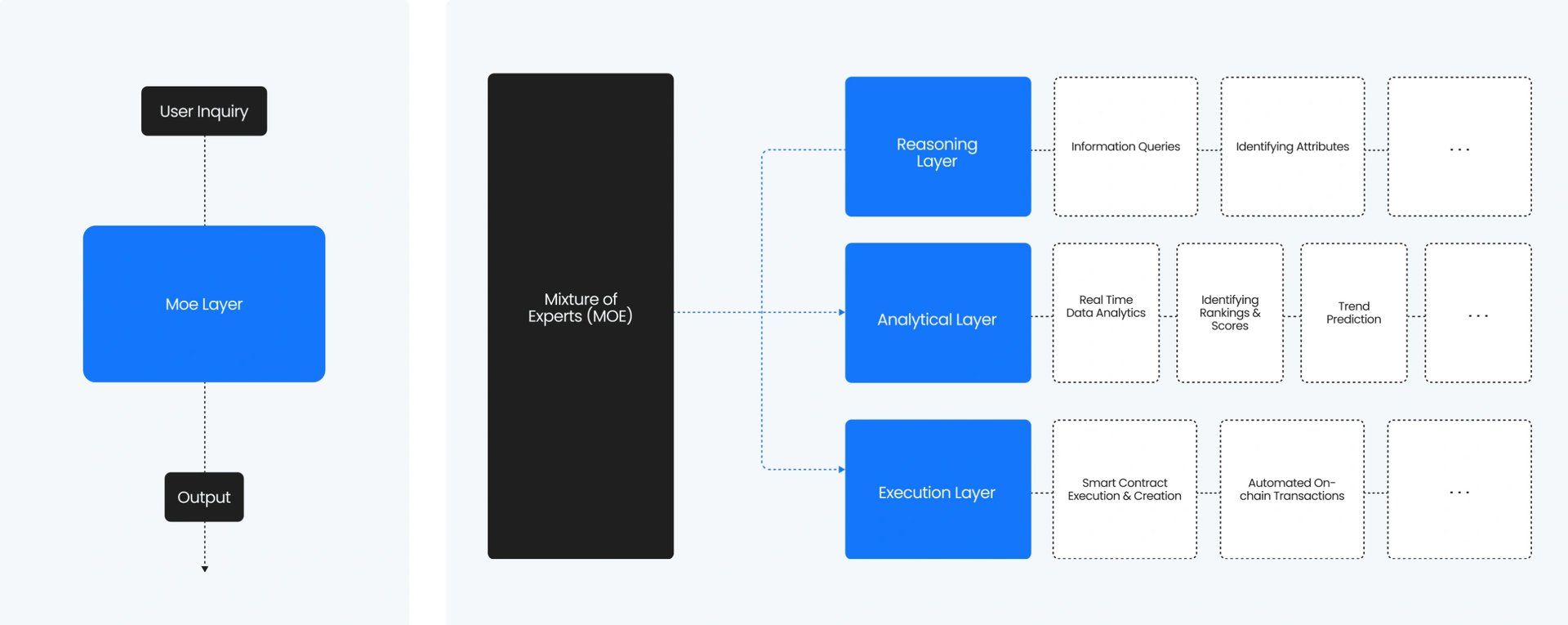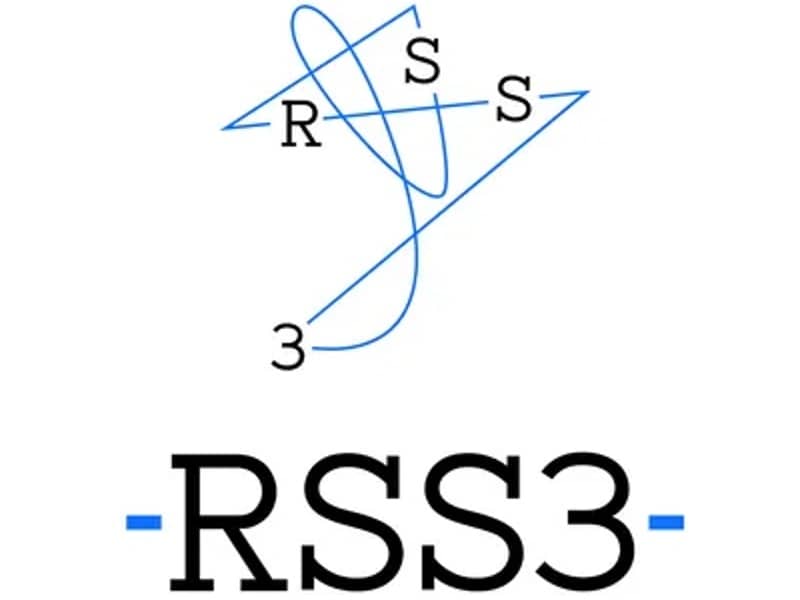RSS3
RSS3는 개방형 웹에서 정보 교환을 향상시키기 위해 개방형 정보 계층(Open Information Layer)을 구축하는 것을 목표로 하는 프로토콜입니다. 효율적인 정보 전파를 가능하게 함으로써 AI 학습, 소셜 미디어, 검색 엔진을 포함한 다양한 애플리케이션을 지원하도록 설계된 분산형 인프라입니다.[1][2]
개요
2020년 하반기 이후, 원래 RSS에서 영감을 받은 분산형 피드 프로토콜인 RSS3는 개방형 정보 교환을 용이하게 함으로써 개방형 웹을 향상시키는 것을 목표로 했습니다. web3 콘텐츠의 증가는 사용자 소유 자산을 중심으로 한 web3 신원 개발로 이어졌습니다. RSS3는 사용자가 web3 환경에서 자신의 자산을 독립적으로 제어하고 표시할 수 있도록 함으로써 서로 다른 플랫폼에서 사용자 신원 및 자산의 통합된 프레젠테이션에 대한 요구를 충족하고자 합니다. RSS3 토큰은 네트워크를 관리하며, 글로벌 인덱서 및 서빙 노드 선출과 같은 요소에 영향을 미칩니다. 네트워크 노드는 다양한 개방형 웹 프로토콜을 색인하여 귀중한 정보에 대한 범용 액세스를 제공합니다. RSS3는 개방형 소셜 프로토콜을 지원하고 분산형 애플리케이션, 검색 엔진 및 활동 피드를 가능하게 합니다.[3][4][12]
소셜
RSS3는 다양한 소셜 프로토콜을 지원하는 개방형 소셜 인덱서로서 개방형 소셜 플랫폼 간의 상호 운용성을 향상시키는 것을 목표로 합니다. 중앙화된 시스템과 달리 분산형 데이터 시스템은 자율적인 노드와 플랫폼에 데이터를 분산하여 보안과 투명성을 높이지만 데이터 활용에는 어려움이 있습니다. RSS3 네트워크는 개방형 정보 계층(Open Information Layer)이라고도 하며 광범위한 개방형 정보와 데이터 처리 간소화를 제공합니다.[5][6]
검색
RSS3는 개방형 웹 검색 기능을 향상시켜 검색 엔진, 크로스 블록체인 탐색기 및 활동 피드를 더 쉽게 개발할 수 있도록 합니다. 분산형 네트워크 데이터를 처리하여 이러한 도구 생성을 용이하게 합니다. 이 시스템은 사용 편의성을 위해 설계되어 단일 API 호출을 통해 온체인 및 오프체인 데이터에 액세스할 수 있습니다. 구조화된 데이터는 자세한 분석을 가능하게 하고 실시간 검색은 최신 정보에 대한 액세스를 보장합니다. RSS3는 개방형 웹에서 데이터 해석을 개선하여 dApp과 사용자가 단일 쿼리를 통해 온체인 및 오프체인 상호 작용을 포함한 다양한 활동에 액세스할 수 있도록 설계되었습니다.[6][7]
AI
RSS3는 특정 작업에 대해 전문가 모델을 선택하도록 설계된 전문가 혼합(MoE) 아키텍처를 통해 AI를 통합합니다. 이 플랫폼은 콘텐츠 생성, 기업 워크플로 최적화, 자동화된 스마트 계약 실행, 실시간 시장 분석 및 위험 관리와 같은 작업을 위한 온체인 AI 솔루션을 제공합니다. 또한 AI 모델 미세 조정 및 기타 관련 기능을 위한 AI 지원 API를 제공합니다.[6][8][9]

토큰 경제
RSS3 토큰
2022년 2월 12일, RSS3는 Cooper Launch에서 총 10억 개의 토큰을 5년에 걸쳐 점진적으로 출시하는 자체 유틸리티 토큰인 RSS3를 출시했습니다. 이 토큰은 주로 DAO의 거버넌스 메커니즘으로 사용됩니다. RSS3 토큰은 글로벌 인덱서 및 서빙 노드 선출, 서빙 노드당 최대 RSS3 파일 수 조정 등 네트워크의 다양한 측면을 감독하는 데 중요한 역할을 합니다. 또한 네트워크 개발에 기여한 사람들을 위한 보상 시스템으로도 기능합니다.[4][11]
할당
2024년 1월 17일 기준 RSS3 토큰 할당은 다음과 같습니다.
- 개발 목적: 45% (개발 21.6%, 미상 23.4%)
- 팀: 15% (현재 배포 4.87%, 미상 10.1%)
- 프라이빗 세일: 10% (현재 배포 6.32%, 미상 3.68%)
- 얼리 인센티브: 10% (전체 할당 미사용)
- 퍼블릭 세일: 5% (현재 배포 5%)
- Natural Selection Labs: 5% (현재 배포 2.4%, 미상 2.6%)
- 시드 라운드: 4.6% (현재 배포 2.21%, 미상 2.39%)
- 에어드롭: 2.4% (현재 배포 2.4%)
- 유동성: 2% (현재 배포 2%)
- 자문: 1% (현재 배포 1%)
마지막 해제 이벤트는 2023년 11월 14일에 예정되어 있으며, 총 공급량의 2.25%(2,253만 RSS3 토큰)를 해제하여 시가총액의 4.21%를 차지합니다. 2024년 2월 14일에는 다음 해제 이벤트가 예정되어 있으며, 5라운드에 걸쳐 2,253만 RSS3 토큰(총 공급량의 2.25%에 해당)과 245만 달러(시가총액의 3.75%에 해당)가 27일 이내에 공개될 예정입니다.[10]
자금 조달
2022년 1월, RSS3는 Coinshares Ventures가 주도하고 Coinbase Ventures, Dragonfly Capital, Mask Network, HashKey Group, Arweave, Dapper Labs, Avalanche Asia Star Fund, Youbi Capital, Headline VC, Formless Capital, imToken Ventures 및 Balaji Srinivasan, Jeff “Jiho” Zirlin, Miss ₿itcoin 및 Scott Moore를 포함한 개인 투자자들이 참여한 600만 달러 규모의 시드 펀딩 라운드의 일환으로 Fabric Ventures의 지원을 받았습니다.[12]
